Christopher Burkett (born 1951) is an American landscape photographer known for large format photography of woodlands. [1]
Burkett has been making prints since 1980. His works include very large Cibachrome color prints (40x50) from 8x10 transparencies. According to Jim Alinder, "[t]he best of Christopher Burkett's photographs have an almost mystical sense of connection to us, one that cannot fully be conveyed through words or reproductions. [2]
Burkett is also a former brother in an Orthodox Christian religious order who, Vincent Rossi writes, has "transformed photographic technique into a spiritual endeavor." [3]
On April 15, 2018 the PBS national network broadcast a segment about Burkett on NewsHour Weekend. The program reviewed his photography favorably. [4]
Three of his photographs are in the collection of the Portland Art Museum, [5] and another is in the collection of the Birmingham Museum of Art. [6]
Burkett's books and exhibits have been reviewed in the Bloomsbury Review , San Diego Union-Tribune , The Washington Post , and Book Reader; an interview with Burkett was published in View Camera magazine. [7] Articles about Burkett have also appeared in Camera Arts, Hasselblad Forum, and Popular Photography. [8] The North American Bookdealers Exchange awarded Burkett's book Intimations of Paradise Best Book of the Year for Art and Photography in 1999 [9] and in 2004 he was one of twelve photographers honored with the Hasselblad Masters award for his photography by camera manufacturer Hasselblad. [10]
Burkett was born in 1951, grew up in the Pacific Northwest, and now lives in Oregon. He joined a Christian religious brotherhood in the early 1970s [11] and, in 1975, first became interested in photography as a form of spiritual expression. [12] In 1979 he left the brotherhood and married his wife, Ruth.
Since then he and his wife are Orthodox. Burkett attends the Church of the Annunciation in Milwaukie, which belongs to the Orthodox Church of America (OCA). [13] [14]

Ansel Easton Adams was an American landscape photographer and environmentalist known for his black-and-white images of the American West. He helped found Group f/64, an association of photographers advocating "pure" photography which favored sharp focus and the use of the full tonal range of a photograph. He and Fred Archer developed a system of image-making called the Zone System, a method of achieving a desired final print through a technical understanding of how the tonal range of an image is the result of choices made in exposure, negative development, and printing.

Wolfgang Tillmans is a German photographer. His diverse body of work is distinguished by observation of his surroundings and an ongoing investigation of the photographic medium’s foundations.

Henri Cartier-Bresson was a French artist and humanist photographer considered a master of candid photography, and an early user of 35mm film. He pioneered the genre of street photography, and viewed photography as capturing a decisive moment.

Daidō Moriyama is a Japanese photographer best known for his black-and-white street photography and association with the avant-garde photography magazine Provoke.

Jeffrey Wall, OC, RSA is an artist best known for his large-scale back-lit Cibachrome photographs and art history writing. Early in his career, he helped define the Vancouver School and he has published essays on the work of his colleagues and fellow Vancouverites Rodney Graham, Ken Lum, and Ian Wallace. His photographic tableaux often take Vancouver's mixture of natural beauty, urban decay, and postmodern and industrial featurelessness as their backdrop.

Bernhard "Bernd" Becher, and Hilla Becher, née Wobeser, were German conceptual artists and photographers working as a collaborative duo. They are best known for their extensive series of photographic images, or typologies, of industrial buildings and structures, often organised in grids. As the founders of what has come to be known as the 'Becher school' or the Düsseldorf School of Photography, they influenced generations of documentary photographers and artists in Germany and abroad. They were awarded the Erasmus Prize and the Hasselblad Award.
William Eggleston is an American photographer. He is widely credited with increasing recognition for color photography as a legitimate artistic medium. Eggleston's books include William Eggleston's Guide (1976) and The Democratic Forest (1989).

Josef Koudelka is a Czech-French photographer. He is a member of Magnum Photos and has won awards such as the Prix Nadar (1978), a Grand Prix National de la Photographie (1989), a Grand Prix Henri Cartier-Bresson (1991), and the Hasselblad Foundation International Award in Photography (1992). Exhibitions of his work have been held at the Museum of Modern Art and the International Center of Photography, New York; the Hayward Gallery, London; the Stedelijk Museum Amsterdam; and the Palais de Tokyo, Paris.
Robert Adams is an American photographer who has focused on the changing landscape of the American West. His work first came to prominence in the mid-1970s through his book The New West (1974) and his participation in the exhibition New Topographics: Photographs of a Man-Altered Landscape in 1975. He has received two Guggenheim Fellowships, a MacArthur Fellowship, the Deutsche Börse Photography Prize and the Hasselblad Award.
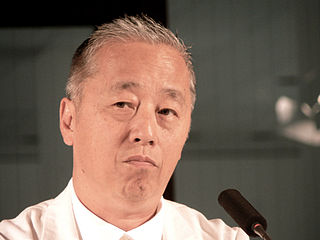
Hiroshi Sugimoto is a Japanese photographer and architect. He leads the Tokyo-based architectural firm New Material Research Laboratory.
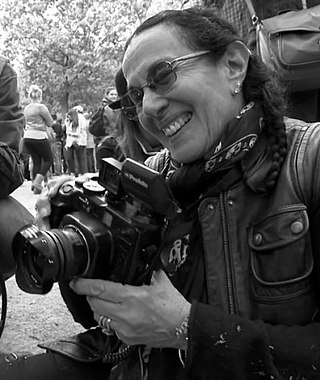
Mary Ellen Mark was an American photographer known for her photojournalism, documentary photography, portraiture, and advertising photography. She photographed people who were "away from mainstream society and toward its more interesting, often troubled fringes".
David Goldblatt HonFRPS was a South African photographer noted for his portrayal of South Africa during the period of apartheid. After apartheid had ended he concentrated more on the country's landscapes. What differentiates Goldblatt's body of work from those of other anti-apartheid artists is that he photographed issues that went beyond the violent events of apartheid and reflected the conditions that led up to them. His forms of protest have a subtlety that traditional documentary photographs may lack: "[M]y dispassion was an attitude in which I tried to avoid easy judgments. . . . This resulted in a photography that appeared to be disengaged and apolitical, but which was in fact the opposite." He has numerous publications to his name.
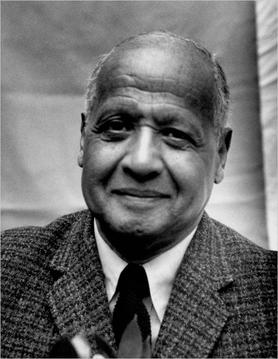
Roy Rudolph DeCarava was an American artist. DeCarava received early critical acclaim for his photography, initially engaging and imaging the lives of African Americans and jazz musicians in the communities where he lived and worked. Over a career that spanned nearly six decades, DeCarava came to be known as a founder in the field of black and white fine art photography, advocating for an approach to the medium based on the core value of an individual, subjective creative sensibility, which was separate and distinct from the "social documentary" style of many predecessors.

Paul Seawright is a Northern Irish artist. He is the professor of photography and the Deputy Vice Chancellor at Ulster University in Belfast/Derry/Coleraine. Seawright lives in his birthplace of Belfast.
Malick Sidibé was a Malian photographer from a Fulani village in Soloba, who was noted for his black-and-white studies of popular culture in the 1960s in Bamako. Sidibé had a long and fruitful career as a photographer in Bamako, Mali, and was a well-known figure in his community. In 1994 he had his first exhibition outside of Mali and received much critical praise for his carefully composed portraits. Sidibé's work has since become well known and renowned on a global scale. His work was the subject of a number of publications and exhibited throughout Europe and the United States. In 2007, he received a Golden Lion for Lifetime Achievement at the Venice Biennale, becoming both the first photographer and the first African so recognized. Other awards he has received include a Hasselblad Award for photography in 2003, an International Center of Photography Infinity Award for Lifetime Achievement (2008), and a World Press Photo award (2010).
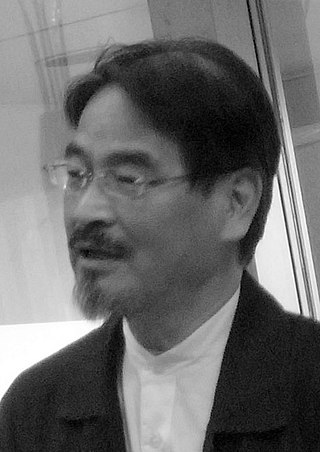
Hiroh Kikai was a Japanese photographer best known within Japan for four series of monochrome photographs: scenes of buildings in and close to Tokyo, portraits of people in the Asakusa area of Tokyo, and rural and town life in India and Turkey. He pursued each of these for over two decades, and each led to one or more book-length collections.

Paul Graham is a British fine-art and documentary photographer. He has published three survey monographs, along with 17 other publications.
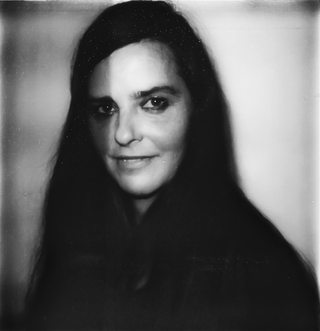
Rineke Dijkstra HonFRPS is a Dutch photographer. She lives and works in Amsterdam. Dijkstra has been awarded an Honorary Fellowship of the Royal Photographic Society, the 1999 Citibank Private Bank Photography Prize and the 2017 Hasselblad Award.
Ion Zupcu is a fine art photographer who was born in Romania in 1960. He has recently shown photographs of his own minimalist still lifes in various museums and galleries throughout the United States. He initially studied photography in Romania in 1982, but this study was interrupted when he emigrated to the United States. In order to support his family who remained in Romania, he drove a taxi cab in New York City. After a chance meeting while driving this taxi, he was able to resume his practice when offered access to a darkroom.

Monolith, the Face of Half Dome, Yosemite National Park, California is a black and white photograph taken by Ansel Adams in 1927 that depicts the western face of Half Dome in Yosemite, California. In the foreground of the photo, viewers are able to see the texture and detail of the rock as well as the background landscape of pine trees and the Tenaya Peak. Monolith was used by the Sierra Club as a visual aid for the environmental movement, and was the first photograph Adams made that was based on feelings, a concept he would come to define as visualization and prompt him to create the Zone System. The image stands as a testament to the intense relationship Adams had with the landscape of Yosemite, as his career was largely marked by photographing the park. Monolith has also physically endured the test of time as the original glass plate negative is still intact and printable. The photograph is a part of the portfolio Parmelian Prints of the High Sierras, released in 1927.